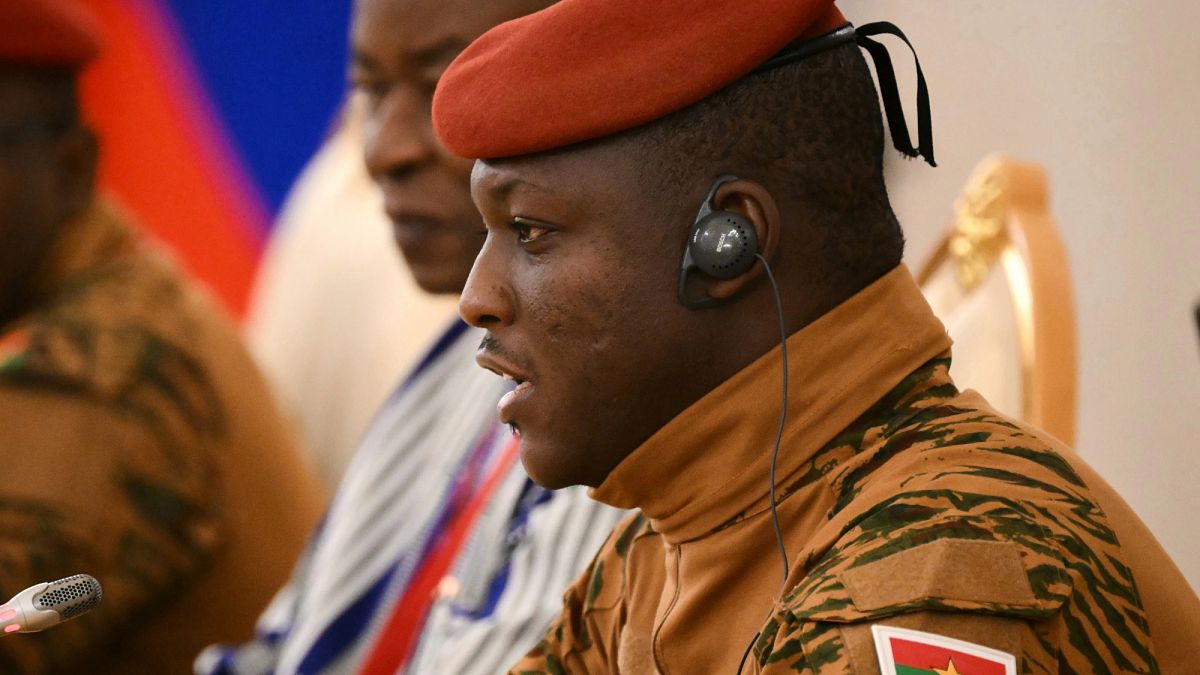Burkina Faso’s army directed and participated in a massacre by pro-government militias of at least 130 civilians in March around the western town of Solenzo, Human Rights Watch (HRW) has said.
The findings, published in a new report on Monday, were based on witness testimony and an analysis of footage shared online.
The attack was directed against the Fulani ethnic group, who have been displaced en masse in recent months from Banwa province.
After the March massacre, the Al Qaeda-affiliated Group for the Support of Islam and Muslims (JNIM) retaliated with a series of attacks in Sourou, a province to the north.
The Islamist armed group targeted villages believed to have helped the army, killing at least 100 civilians, according to HRW.
“The viral videos of the atrocities by pro-government militias near Solenzo sent shock waves through Africa’s Sahel region, but they told only part of the story,” said Ilaria Allegrozzi, senior Sahel researcher at HRW.
“Further research uncovered that Burkina Faso’s military was responsible for these mass killings of Fulani civilians, which were followed by deadly reprisals by an Islamist armed group.”
Allegrozzi called on the government to “impartially investigate these deaths and prosecute all those responsible”.
‘Shot at us like animals’
HRW interviewed dozens of witnesses to the attacks, and viewed videos showing abuses by pro-government volunteers (VDPs) against Fulani civilians near Solenzo, as well as analysing information posted on social media.
“Thousands of Fulani families from over 20 villages set out for [neighbouring] Mali in search of protection,” said a Fulani herder, 44, from Solenzo, whose eight family members were killed in the attacks.
“However, we couldn’t reach Mali without crossing villages [that were] occupied by the VDPs and the army. The VDPs shot at us like animals, while drones were flying over our heads. Many women and children died because they could not run.”
Witnesses described the direct participation of the country’s army alongside VDPs in the operation, including the use of military helicopters.
They also mentioned the targeting of Fulani civilians. A 50-year-old woman from Solenzo told HRW: “I heard the VDPs saying in the Djoula language: ‘Nobody will escape! Look for the Fulani everywhere. We are going to kill all Fulani.’”
Such testimony was said to corroborate statements by VDP members recorded in videos reviewed by the organisation.
In a statement published on 15 March, a government spokesperson said that on 10 March, militia and security forces fought off a “terrorist” attack and killed about 100 assailants before chasing others through the bush.
The spokesperson said the security forces and VDPs “took over the forest to dismantle the terrorist base.” They found women, children, and older people “whom the terrorists tried to use as human shields, as well as a large herd of stolen cattle and goats,” and took them to safety.
However, witnesses contradicted the government’s account, saying no fighting took place between government forces and the Islamist fighters near Solenzo, and that the military operation appeared to have been carefully planned.
Islamist armed groups have focused on recruiting from the Fulani community, and the government has long conflated the two.
Fulani witnesses said the recent military operation had displaced most Fulani people from Banwa province. Hundreds were said to have fled across the border into neighbouring Mali.
“Today, in the whole province, there are no more Fulani – they all fled or were killed or taken hostage,” a 53-year-old man from Solenzo told HRW.
Reprisals by the Islamist JNIM
Following the attacks near Solenzo, the military proceeded toward Sourou, which has been under the control of the JNIM for seven years.
Villagers said the army remained in the village for about two days. The JNIM subsequently returned and targeted men it believed had collaborated with the army and its backers.
“All the men had been executed in front of the health centre,” said a 60-year-old woman. “I counted up to 70 bodies.”
Allegrozzi said that the “scope of the atrocities” by government forces, militias and Islamist armed groups in western Burkina Faso “remain grossly overlooked”.
She called on the United Nations Security Council and the African Union Peace and Security Council to urgently place Burkina Faso “high on their agendas and act to protect civilians still at grave risk”.
The Sahel region of Africa now accounts for “over half of all terrorism-related deaths”, according to a report by the Global Terrorism Index (GTI) published in March.
Burkina Faso’s military junta seized power in 2022, after the country’s government struggled to control Islamist insurgencies.
Burkina Faso authorities did not immediately reply a request for comment.

